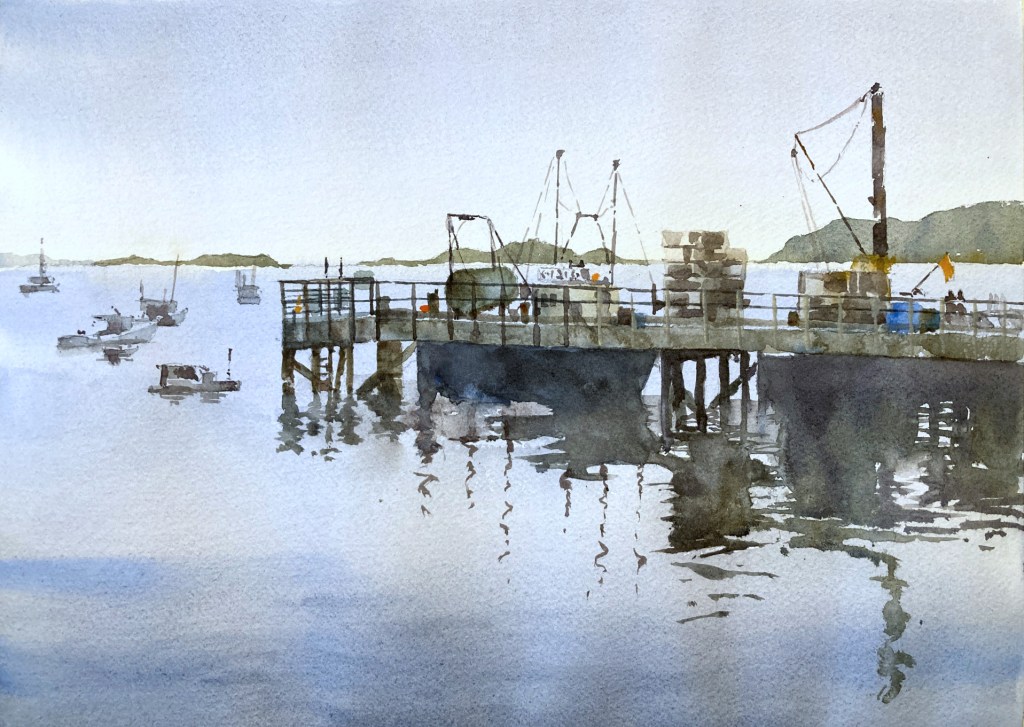A New England coast watercolor painting today. Lots of very close values. It is a surprisingly tricky view to paint and I’m fairly happy with it. Day 6 of 30 in 30.
Some thoughts:
Keep The Main Shapes Large
Although there’s a lot going on in the center of the painting I didn’t want to overwhelm the viewer with lots of choppy detail. If you stand back from the painting you can see there are 3 main shapes: the sky, the water, and the jetty. I kept the values of those around an average value. The sky is light, the water is slightly darker, and the jetty is much darker still.
Vary the Value Within the Main Shapes
The interest in the painting happens within that big dark shape. Even though at a distance it looks uniform when you get closer in there’s a lot going on there. A lot of detail and activity is just suggested by slight changes in value. It gives the eye something to focus on but still keeps the ‘big look’ of the painting as a whole. Stapleton Kearns writes about this a lot (and he should know!) and his blog is well worth a look.
Don’t have Detail Everywhere in your Coast Watercolor Painting
This isn’t a hard and fast rule but I find I like paintings where the following happens. I like a painting where some areas left pretty empty and some areas have lots going on. Or some regions have a lot of color change and others have very little. Or some regions have contrast or texture and others have none. You get the idea. I intentionally kept both the sky and the water with minimal detail. This allowed the central portion to have all the action. If you do this carefully and provide a few connecting areas – the boats and the reflections in this case – it stops the detail overwhelming the viewer. And, frankly, I just like the way it looks!
While I’m Here

Online Zoom Classes
I run online zoom courses regularly for both beginners and more advanced students. Please check out my workshop page.
